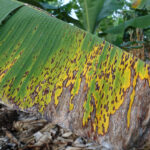Ecuadorian banana exports show a decrease in shipments

Data from the Statistics Coordination Office of the Ecuadorian Banana Marketing and Export Association (ACORBANEC) shows that from January to August 2024, Ecuador’s banana exports totaled 244.10 million boxes, marking a 1.55% decrease compared to the same period in 2023.
To understand the trends in banana shipments, Freshfruitportal.com spoke with ACORBANEC's Executive Director, Richard Salazar.
The report reveals that the European Union remains the largest destination for Ecuadorian bananas, accounting for 30.02% of total exports, followed by Russia at 18.44%, the Middle East at 13.29%, and the United States at 12.73%. Other significant markets include South America at 6.30% and Africa at 5.78%.
The data indicates an increase in exports to Africa (+9.29%), the United States (+33.56%), Eastern Europe (+26.53%), Oceania (+18.20%), and the EFTA (Norway) (+34.22%). These gains have helped offset export declines in other destinations, such as Russia and the Middle East.
Notably, South Korea experienced a significant export increase of 236.25%, following a decision by the country’s Ministry of Finance to reduce tariffs to 0% on 28 fruits and vegetables, including bananas, in the first half of the year. This trend is expected to continue in the second half.
Significant growth was also seen in Italy (+16.74%), the Netherlands (+23.13%), Algeria (+70.03%), and Saudi Arabia (+32.36%), among other markets.
Commenting on the report, Salazar noted, “At the beginning of the year, we experienced a drastic reduction in exports of around 12%. However, starting in March, Ecuador, Colombia, and Central America all saw reductions in production due to lower productivity caused by climatic challenges in these countries.”
He explained that Ecuador was affected by high radiation, which stressed the plants and disrupted their normal physiological development.
Salazar also mentioned that the Ecuadorian banana industry has struggled with declining yield ratios. “Previously, we had an average of 1.5 to 1.4; today, it ranges from 1.3 to 1. On average, we’ve seen a 15% reduction in production.”
Due to reduced production in banana-exporting countries, companies have turned to Ecuador to purchase more fruit. “In the case of the United States, we initially saw a 10% reduction in exports, but now we’ve experienced a 34% increase,” Salazar explained.
Export 2023-2024
Regarding logistics, the report shows that of the 244.10 million boxes of bananas exported from January to August 2024, 49.32% were shipped from Guayaquil’s ports, 28.75% from the Deep Water Port of Posorja, and 22.93% from the Bolívar Port in Machala.
It’s important to note that 86.50% of the 244.10 million boxes were shipped in containers, while 13.50% were transported as bulk or loose cargo on refrigerated vessels.
Salazar noted, “We’ve seen a 1.55% reduction in exports compared to August last year, primarily due to reduced production.”
He added that average spot prices have been significantly higher than the minimum support price (the official price in Ecuador) due to a market imbalance caused by reduced supply, which has driven prices up.
When asked about projections for the next three months, Salazar said, “Climate change is here to stay, and I believe this trend will continue. Yields are expected to be lower than they were from January to August due to ongoing climatic effects.”







































